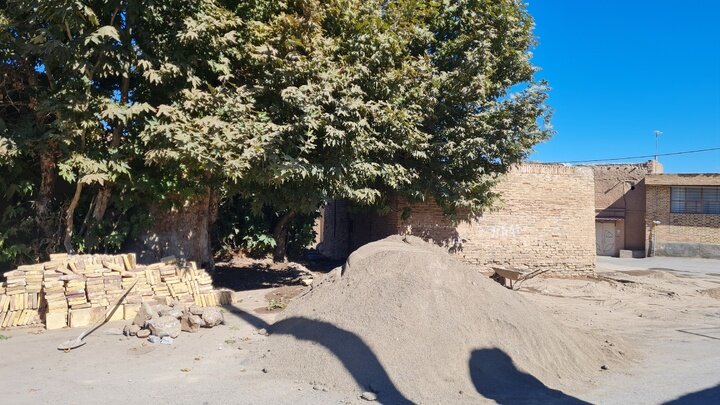Restoration begins on historical cistern in Mayamey

TEHRAN- A restoration project has been commenced on a Qajar-era (1789-1925) Ab-Anbar (cistern) in the historical structure of the city of Mayamey in north-central Semnan province.
The project involves strengthening the historical structure as well as repairing the damaged part, Mayamey’s tourism chief has said.
The project is being carried out in collaboration of Mayamey Municipality, Mojtaba Mohammadzadeh said on Saturday.
The cistern has been inscribed on the national heritage list, the official added.
The term Ab-Anbar is common throughout Iran as a designation for roofed underground water cisterns. It associates with water management systems in arid areas that are reliant on permanent springs or seasonal rainwater.
Such underground reservoirs or are parts of the iconic qanat systems, which rely on snow-fed streams flowing down from surrounding mountains.
Qanats, according to UNESCO, provide exceptional testimony to cultural traditions and civilizations in desert areas with an arid climate.
The main population centers of Semnan province lie along the ancient Silk Road (and modern-day Imam Reza Expressway), linking Rey (Tehran) with Khorasan (Mashhad). While few visitors spend much time in the area, driving through you can easily seek out several well-preserved caravanserais (notably Dehnamak and Ahowan), cisterns (the Cafe Abenbar in Garmsar is a special treat), and ruined mud citadels (Padeh is lumpy but fascinating). The large, bustling cities of Semnan, Damghan, and Shahrud (Bastam) all have a small selection of historic buildings and Semnan has a fine old covered bazaar.
The history of Semnan dates back to ancient Iran when the city was part of the Median Empire. At the time of the Achaemenid Empire of Persia, Semnan was a magnificent city. After the attack of Alexander, Semnan became famous as Koomesh. The great era of the prosperity of this city began after the advent of the Parthian Empire.
Due to its location, which was on the traffic center of the north, south, east, and west, Semnan had always been the subject of a struggle for power in the Sassanid period. In the Sassanid and post-Islamic periods, the city was the basis of central governments in the area.
SAB/
Leave a Comment